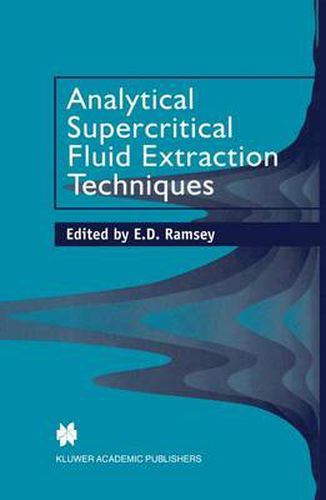Readings Newsletter
Become a Readings Member to make your shopping experience even easier.
Sign in or sign up for free!
You’re not far away from qualifying for FREE standard shipping within Australia
You’ve qualified for FREE standard shipping within Australia
The cart is loading…






This title is printed to order. This book may have been self-published. If so, we cannot guarantee the quality of the content. In the main most books will have gone through the editing process however some may not. We therefore suggest that you be aware of this before ordering this book. If in doubt check either the author or publisher’s details as we are unable to accept any returns unless they are faulty. Please contact us if you have any questions.
During the past decade supercritical fluid extration (SFE) has attracted considerable attention as a sample preparation procedure in analytical chemistry. The successful implementation of this technique can lead to improved sample throughput, more efficient recovery of analytes, cleaner extracts, economic replacement of halogenated solvents and a high level of automation, compared to conventional sample preparation procedures.
This book provides an overview of basic principles of SFE as well as in-depth reviews of both on- and off-line SFE methods. The on-line coupling of SFE with both chromatographic and spectroscopics techniques has been the subject of a great deal of research effort and is dealt with in detail. Newer developments, such as off-line SFE of solid and liquid matrices, are starting to attract a great deal of interest, and the coverage of these areas will prove of particular value to the analytical chemist. The international team of authors has illustrated these topics with many “state-of-the-art’ applications, and each chapter provides a comprehensive list of references. For the convenience of the reader, an appendix which contains pressure conversion scales and supercritical fluid carbon dioxide density tables appears at the end of the book.
The volume’s extensive coverage of both on-line and off-line extraction will be particularly useful to analytical chemists, in a wide range of environments, seeking to develop high quality, simple and robust SFE methods.
$9.00 standard shipping within Australia
FREE standard shipping within Australia for orders over $100.00
Express & International shipping calculated at checkout
This title is printed to order. This book may have been self-published. If so, we cannot guarantee the quality of the content. In the main most books will have gone through the editing process however some may not. We therefore suggest that you be aware of this before ordering this book. If in doubt check either the author or publisher’s details as we are unable to accept any returns unless they are faulty. Please contact us if you have any questions.
During the past decade supercritical fluid extration (SFE) has attracted considerable attention as a sample preparation procedure in analytical chemistry. The successful implementation of this technique can lead to improved sample throughput, more efficient recovery of analytes, cleaner extracts, economic replacement of halogenated solvents and a high level of automation, compared to conventional sample preparation procedures.
This book provides an overview of basic principles of SFE as well as in-depth reviews of both on- and off-line SFE methods. The on-line coupling of SFE with both chromatographic and spectroscopics techniques has been the subject of a great deal of research effort and is dealt with in detail. Newer developments, such as off-line SFE of solid and liquid matrices, are starting to attract a great deal of interest, and the coverage of these areas will prove of particular value to the analytical chemist. The international team of authors has illustrated these topics with many “state-of-the-art’ applications, and each chapter provides a comprehensive list of references. For the convenience of the reader, an appendix which contains pressure conversion scales and supercritical fluid carbon dioxide density tables appears at the end of the book.
The volume’s extensive coverage of both on-line and off-line extraction will be particularly useful to analytical chemists, in a wide range of environments, seeking to develop high quality, simple and robust SFE methods.